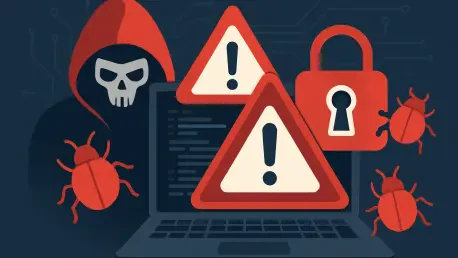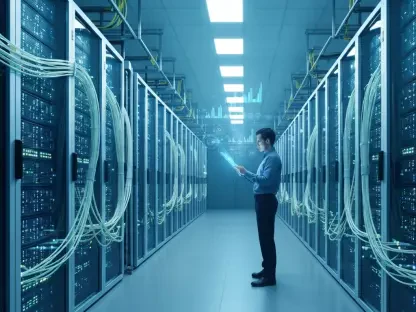Imagine a world where the very systems that power critical infrastructure—think power grids, defense networks, and transportation hubs—are built on software that no one fully understands. This unsettling reality is at the heart of a pressing concern raised by leading cybersecurity experts and government agencies. As software development races forward at an unprecedented pace, the ability to analyze, verify, and secure these digital foundations lags dangerously behind. This disparity, often termed the “software understanding gap,” is emerging as a profound threat to national security, leaving vital systems exposed to undetected vulnerabilities and potential exploitation. The implications are far-reaching, touching on everything from military operations to civilian safety, and demand urgent attention from both public and private sectors.
Addressing the Growing Threat
Unpacking the Disparity in Software Comprehension
The core issue lies in the stark imbalance between the speed of software creation and the capacity to scrutinize its inner workings. Reports from authoritative bodies like the Cybersecurity and Infrastructure Security Agency (CISA) and Sandia National Laboratories highlight that while developers churn out complex code at breakneck speed, the tools and expertise to evaluate its safety and security are woefully inadequate. This gap isn’t merely a technical hiccup; it’s a systemic flaw that amplifies risks across critical sectors. Society often places blind trust in software, assuming it functions as intended under all conditions, yet the reality is far grimmer. Without a deep understanding of how these systems operate, vulnerabilities remain hidden, creating openings for cyber threats that could cripple infrastructure or compromise sensitive data. The urgency to address this cannot be overstated, as the gap continues to widen with each passing day, outpacing current mitigation efforts.
Limitations of Existing Protective Measures
Current safeguards, such as testing protocols, digital signatures, and malware detection, fall short of bridging this critical divide. These measures, while useful in specific contexts, fail to provide a comprehensive view of software behavior, leaving significant blind spots that adversaries could exploit. Reverse engineering, often seen as a last resort for understanding complex systems, is resource-intensive and reliant on scarce expertise, making it an unsustainable solution for widespread use. The absence of robust analysis frameworks means that even well-intentioned security practices cannot fully protect against risks embedded deep within code. This inadequacy heightens the vulnerability of national systems, where a single undetected flaw could lead to catastrophic consequences. As software becomes increasingly integral to defense and civilian operations, the inability to thoroughly vet it undermines trust and exposes critical missions to unnecessary danger, demanding a reevaluation of how security is approached.
Building a Path Forward
Crafting a Software Understanding Ecosystem
To counter this escalating threat, there’s a pressing need to develop a sophisticated “software understanding ecosystem” that matches the complexity of modern software production. Such a system would encompass advanced analysis tools, libraries, and frameworks capable of dissecting code with precision and speed. At present, no such ecosystem exists, nor are there concerted initiatives to create one, leaving a gaping hole in national security defenses. The envisioned ideal would enable mission owners and developers to rigorously analyze software, detect vulnerabilities, and mitigate risks efficiently. While perfection remains out of reach, leveraging automation and independent analysis could significantly reduce reliance on limited human expertise, cut costs, and bolster confidence in software reliability. This approach would not only fortify defense mechanisms but also enhance civilian applications, ensuring that trust in digital systems is well-placed and risks are minimized through proactive measures.
Fostering Collaboration for Systemic Change
Addressing this challenge requires a collaborative effort that unites software analysis experts, industry leaders, and government entities in a shared mission. The foundational step of understanding software behavior must be prioritized through sustained research and development, as it underpins all subsequent risk management strategies. National initiatives, including recent executive orders promoting zero-trust architectures and enhanced oversight of cloud services, are steps in the right direction but do not yet tackle the core issue of comprehension. Without a clear grasp of how software operates, risk assessments remain flawed, and protective measures lack efficacy. A unified push to build analytical capabilities could transform the landscape, equipping stakeholders with the tools needed to safeguard critical systems. By fostering partnerships across sectors, the focus can shift from reactive fixes to proactive solutions, ensuring that the rapid evolution of software no longer outpaces the ability to secure it.
Reflecting on Past Efforts and Future Directions
Looking back, efforts to grapple with the software understanding gap revealed a persistent struggle to keep pace with technological advancements. Initiatives over recent years aimed at strengthening cybersecurity often fell short, as they failed to address the fundamental inability to fully analyze complex code. Historical reliance on fragmented tools and limited expertise underscored the systemic nature of the challenge, with national security hanging in the balance. Moving forward, the emphasis must be on actionable progress—developing comprehensive analysis ecosystems and fostering cross-sector collaboration to close this critical gap. Investing in automated tools and scalable frameworks offers a promising avenue to enhance security without overburdening resources. As threats evolve, so too must the strategies to counter them, ensuring that both defense and civilian systems are fortified against unseen risks through a renewed commitment to understanding the software that powers them.









